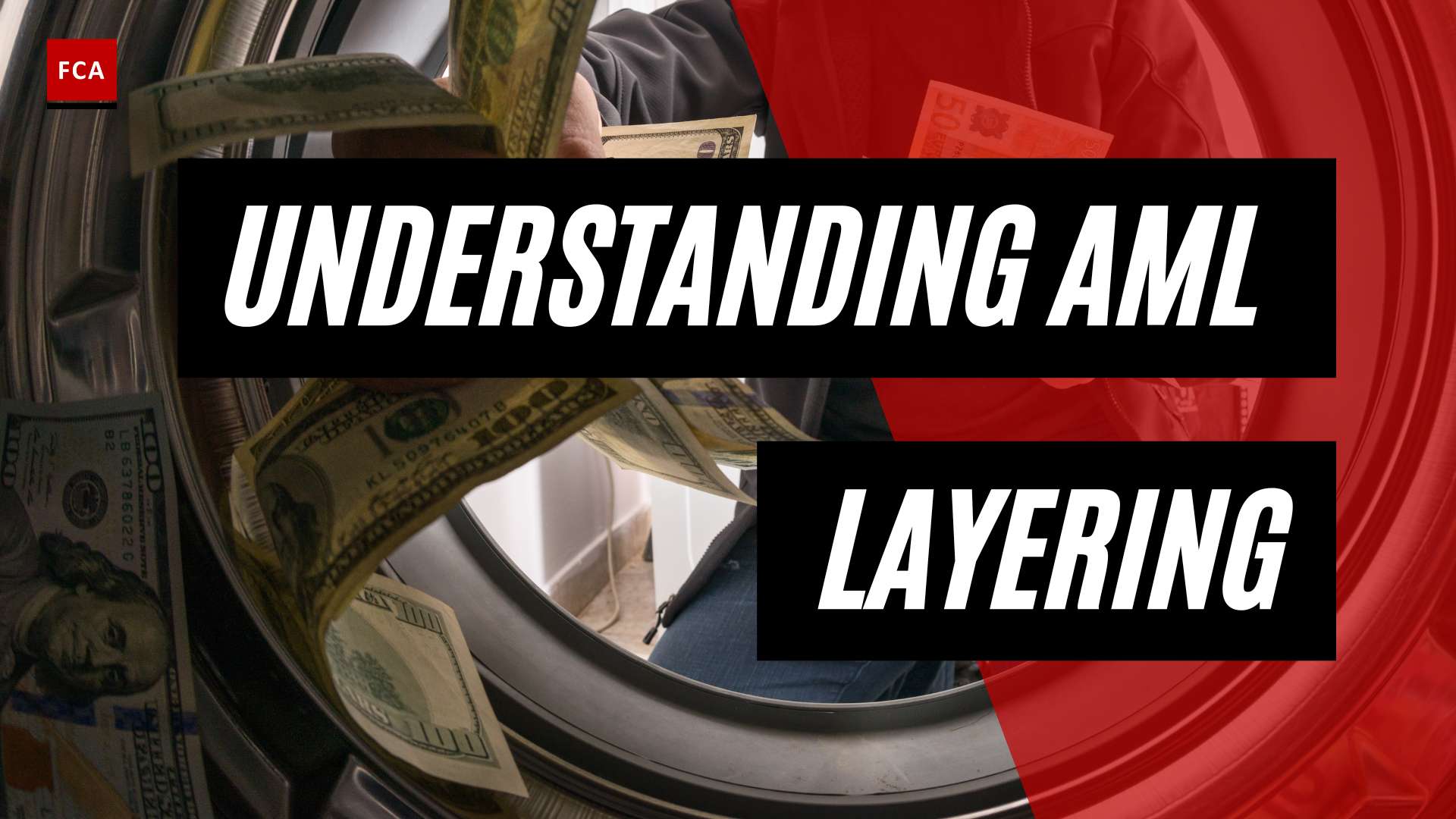Understanding Money Laundering Techniques
Money laundering is a complex process that involves making illicitly obtained funds appear legitimate. Criminals employ various methods and techniques to disguise the illicit origins of money, making it difficult for authorities to track and trace these funds. In this section, we will provide an introduction to money laundering and explore some common methods and techniques used by money launderers.
Introduction to Money Laundering
Money laundering is the process of transforming “dirty” money, which is obtained through illegal activities, into “clean” money that appears legitimate. The purpose of money laundering is to obscure the true source of funds, making it challenging for law enforcement agencies to identify and seize illicit proceeds. This illicit money can originate from activities such as drug trafficking, fraud, corruption, and organized crime.
The process of money laundering typically involves three key stages: placement, layering, and integration. During the placement stage, illicit funds are introduced into the financial system through activities like bank deposits, asset purchases, or gambling. In the layering stage, complex financial transactions are conducted to obscure the origins of the money. Lastly, in the integration stage, the “cleaned” money is integrated into the legitimate economy, often through legal transactions.
Common Methods and Techniques
Money launderers employ a range of techniques to carry out their illicit activities. Some common methods and techniques include:
-
Smurfing: Smurfing, also known as “structuring” or “structuring transactions,” involves breaking large sums of money into smaller, less-suspicious amounts that are then deposited across multiple accounts. This technique allows criminals to avoid triggering suspicious activity reports that could alert financial institutions and authorities. Individuals known as “smurfs” often work in teams to make multiple small transactions, further avoiding detection (Chargebacks911). For more information on the red flags and indicators of smurfing, refer to our article on red flags in smurfing.
-
Shell Companies: Shell companies are corporate entities without active business operations or significant assets. While they serve legitimate purposes such as facilitating mergers and acquisitions or managing risks, they can also be exploited for illicit financial activities like money laundering, tax evasion, and fraud. Criminals use shell companies to obscure the true ownership and movement of funds. The structure and anonymity of shell companies make them powerful tools for money launderers to move funds through the financial system without attracting attention (FlagRight). To learn more about the red flags and indicators of shell companies, visit our article on red flags of money laundering.
-
Real Estate: Real estate transactions have long been used as a means to launder money. Criminals manipulate the price of properties and engage in over- or undervaluation to hide illicit funds. Collusion with gatekeepers such as realtors, property developers, mortgage advisors, and brokers facilitates these activities. The real estate sector offers opportunities to layer and integrate illicit funds into seemingly legitimate assets. Identifying red flags and suspicious indicators in real estate transactions is crucial for detecting and preventing real estate money laundering. For more information, refer to our article on red flags in real estate.
-
Digital Assets and Cryptocurrencies: The rise of digital assets and cryptocurrencies has presented new challenges in anti-money laundering efforts. Criminals misuse virtual assets for money laundering due to the anonymity and lack of regulation surrounding these digital currencies. Mixing services, which pool funds from various users and redistribute them, are used to obfuscate the flow of funds. Cryptocurrencies provide money launderers with a level of anonymity that traditional financial systems do not offer, making them attractive channels for illicit activities. Ensuring effective regulation and monitoring of digital assets is essential to combating money laundering in the digital age. To learn more about the techniques and challenges of money laundering through cryptocurrencies, visit our article on cryptocurrencies and money laundering.
Understanding the common methods and techniques used in money laundering is crucial for professionals working in compliance, risk management, anti-money laundering, and anti-financial crime. By identifying red flags and indicators associated with these techniques, financial institutions and authorities can enhance their ability to detect and prevent money laundering activities.
Smurfing: Breaking Down the Process
Money laundering encompasses various methods and techniques used to disguise the illicit origins of funds. One such technique is smurfing, also known as structuring or structuring transactions. In this section, we will delve into the definition and overview of smurfing, the role of smurfs, and how smurfing is employed in different industries.
Definition and Overview
Smurfing involves breaking down large sums of money into smaller, less-suspicious amounts that are then deposited across multiple accounts. This technique aims to avoid detection by financial institutions and regulatory authorities by keeping individual transactions below the reporting threshold (Chargebacks911).
By splitting up the funds into smaller increments, money launderers can bypass the scrutiny triggered by large transactions, making it more difficult for authorities to trace the origins of the money. Smurfing can occur both in person at bank branches or remotely through electronic transactions, making it a versatile and adaptable money laundering method (Chargebacks911).
The Role of Smurfs
In the context of money laundering, individuals known as “smurfs” play a crucial role in executing the smurfing process. Smurfs work in teams and are responsible for making multiple small transactions on behalf of the money launderers. These individuals may be unaware of the illicit nature of the funds they are handling, acting as intermediaries to mask the true source of the money (Chargebacks911).
The use of smurfs makes it challenging for authorities to identify the ultimate beneficiaries of the illicit funds. Smurfs operate under the direction of higher-level criminals, who orchestrate the smurfing network to ensure the successful movement of money without raising suspicions (Chargebacks911).
Smurfing in Different Industries
Smurfing is not limited to a specific industry or sector. Money launderers may employ this technique across various domains, including banking, retail, and the entertainment industry, among others. Smurfing can be carried out in person through cash transactions, or electronically using multiple bank accounts or online payment platforms.
The adaptability of smurfing allows money launderers to exploit vulnerabilities within different industries. For instance, in the banking industry, smurfing may involve the use of multiple accounts at different banks to make small cash deposits, making it difficult to detect the illegal activity. In the retail sector, criminals may use smurfing to make numerous small purchases with illicit funds, mixing them with legitimate transactions to further obscure their origins.
Recognizing the red flags and indicators of smurfing is crucial for financial institutions and law enforcement agencies in detecting and preventing money laundering activities. For more information on red flags and suspicious indicators related to smurfing, refer to our articles on red flags of money laundering and indicators of money laundering.
Understanding the intricacies of smurfing helps professionals working in compliance, risk management, anti-money laundering, and anti-financial crime to develop effective strategies and measures to combat this money laundering technique. By staying vigilant and implementing robust monitoring systems, organizations can contribute to the fight against money laundering and protect the integrity of the global financial system.
Shell Companies: A Cloak for Illicit Funds
Shell companies play a significant role in the world of money laundering, providing a cloak for illicit funds. While these companies can serve legitimate purposes such as facilitating mergers and acquisitions or managing risks, they can also be exploited for illicit financial activities like money laundering, tax evasion, and fraud. Understanding the nature of shell companies and their involvement in money laundering is crucial for professionals working in compliance, risk management, anti-money laundering, and anti-financial crime.
Shell Companies Explained
Shell companies are corporate entities without active business operations or significant assets. They often exist only on paper, with minimal to no physical presence. These companies can be legally registered and incorporated, giving them a veneer of legitimacy. However, their main purpose is to provide a façade of activity while hiding the true beneficiaries and the origins of the funds involved.
The structure and anonymity offered by shell companies make them attractive to individuals and organizations seeking to conceal their assets and financial activities. High-net-worth individuals, corporations, and even criminals may utilize shell companies to protect assets from litigation, maintain a competitive advantage, shield financial affairs from public scrutiny, and facilitate illegal activities such as tax evasion, money laundering, and fraud.
Money Laundering Stages with Shell Companies
Shell companies are commonly used in the three classic stages of money laundering: placement, layering, and integration. In the placement stage, illicit funds are introduced into the financial system through activities such as bank deposits, asset purchases, or gambling. Shell companies can be used to receive and hold these funds, making it harder to trace their origins.
During the layering stage, complex financial transactions are conducted to obscure the origins of the illicit funds. Shell companies are often involved in creating a web of transactions, moving the funds across various accounts and jurisdictions to further distance them from their illegal source. The structure and secrecy of shell companies make them ideal vehicles for this process, especially when spread across multiple jurisdictions with weak anti-money laundering regulations or strong bank secrecy laws.
In the integration stage, the “cleaned” money is reintroduced into the legitimate economy, often through legal transactions. Shell companies can play a role in this stage by using their seemingly legitimate nature to facilitate the integration of illicit funds into the financial system without arousing suspicion.
Trade-Based Money Laundering
One specific form of money laundering that frequently involves shell companies is trade-based money laundering. In this technique, trade transactions are manipulated to disguise the movement of money. Shell companies can be used to create fictitious invoices, overstate or understate the value of goods, or engage in other deceptive practices to obscure the true nature of the funds being transferred.
The structure and anonymity of shell companies make them powerful tools for money launderers to move funds through the financial system without attracting attention. Trade-based money laundering can involve multiple layers of shell companies, further complicating the tracing of illicit funds.
By understanding the role of shell companies in money laundering and trade-based money laundering, professionals in the field can better detect and prevent these illicit activities. Implementing robust due diligence measures, conducting thorough risk assessments, and monitoring suspicious transactions are essential steps in combating the misuse of shell companies for illicit purposes.
To learn more about red flags and indicators of money laundering, including those associated with shell companies, refer to our articles on red flags of money laundering and indicators of money laundering.
Real Estate: A Hotbed for Money Laundering
Real estate transactions have long been recognized as a hotbed for money laundering activities. Criminals often exploit the complexity and large sums of money involved in real estate transactions to obscure the origins of illicit funds. Understanding the methods used for money laundering through real estate is crucial in combatting financial crime.
Money Laundering Through Real Estate
Money laundering through real estate involves using property transactions as a means to legitimize illicit funds. Criminals may purchase properties using illegally obtained money, making it appear as if the funds were acquired through legal means. This process allows them to integrate the illicit funds into the legitimate economy, making it difficult for authorities to trace the money back to its illegal origins.
In some cases, criminals utilize third-party purchases to buy real estate. This involves using a third party’s bank account to deposit and withdraw illicit funds or involving a friend or family member to carry out transactions on their behalf. These complex setups help to distance the criminals from the illegal funds, obscure ownership details, and decrease the likelihood of authorities investigating the purchase (First AML).
Red Flags and Suspicious Indicators
Detecting money laundering in real estate transactions requires vigilance and awareness of red flags and suspicious indicators. Some common red flags include:
- Third-party purchases: Involvement of individuals or entities unrelated to the actual buyer or seller, potentially indicating an attempt to hide the true beneficial owner of the property.
- Unusual payment methods: The use of cash or multiple financial instruments to make large payments, which may indicate an attempt to obscure the source of funds.
- Price manipulation: Over- or undervaluation of properties, often with collusion from realtors, property developers, or mortgage advisors, can be a tactic used to move illicit funds through seemingly legitimate transactions (ComplyAdvantage).
These are just a few examples of red flags that may indicate money laundering activity. For a more comprehensive list of red flags and indicators, refer to our article on red flags of money laundering.
Real Estate Hubs for Money Laundering
Certain regions and cities have become notorious hubs for money laundering through real estate. These locations often attract illicit funds due to factors such as lax regulations, a high volume of real estate transactions, and limited oversight. Some real estate hubs known for money laundering include:
- London, United Kingdom: London’s high-end real estate market has been a target for money laundering due to its desirability and the anonymity offered by offshore companies.
- Miami, United States: Miami’s luxury real estate market has seen significant money laundering activity, particularly from individuals originating from Latin America.
- Vancouver, Canada: Vancouver’s real estate market has experienced a surge in money laundering, particularly involving funds from China (First AML).
These hubs serve as attractive destinations for criminals looking to exploit the real estate sector for money laundering purposes. Authorities in these regions are increasingly implementing measures to combat illicit activities and increase transparency in real estate transactions.
By understanding the methods used to launder money through real estate, recognizing red flags and suspicious indicators, and being aware of high-risk real estate hubs, professionals in compliance, risk management, and anti-money laundering can contribute to efforts in detecting and preventing financial crime in the real estate sector.
Money Laundering in the Digital Age
As the world becomes increasingly digital, money launderers are adapting their techniques to exploit the opportunities provided by the digital realm. In this section, we will explore the challenges posed by the misuse of virtual assets, the anonymity and lack of regulation in the digital space, and the emerging challenges and solutions in combating money laundering in the digital age.
Misuse of Virtual Assets
One of the significant concerns in 2021, as identified by the Financial Action Task Force (FATF), is the misuse of virtual assets for money laundering activities (Chartered Accountants Worldwide). Virtual assets provide money launderers with a level of anonymity that traditional financial systems do not offer, making them an attractive channel for illicit activities.
Law enforcement agencies globally have reported that a substantial proportion of money laundering activities involve the misuse of virtual assets (Chartered Accountants Worldwide). Money launderers exploit this anonymity to convert illicit proceeds into legal forms of money, making it challenging for authorities to trace the origins of the funds.
Anonymity and Lack of Regulation
The lack of regulation and oversight in the virtual assets sector further exacerbates the challenge of combating money laundering in the digital age. Unlike traditional financial systems, virtual assets operate in a decentralized and often unregulated environment. This lack of regulation allows money launderers to navigate through loopholes and exploit vulnerabilities in the system.
Furthermore, the inherent anonymity associated with virtual assets makes it difficult for authorities to identify the individuals involved in money laundering activities. Transactions conducted using virtual assets can be pseudonymous, meaning that the true identities of the transacting parties are concealed. This anonymity creates a significant hurdle for law enforcement agencies in their efforts to trace and track illicit funds.
Emerging Challenges and Solutions
Recognizing the risks posed by the misuse of virtual assets, authorities and regulators are taking steps to enhance due diligence measures and implement regulations to mitigate these risks. By imposing stricter know-your-customer (KYC) requirements and implementing anti-money laundering (AML) regulations specific to virtual assets, regulators aim to increase transparency and reduce the opportunities for money laundering.
Furthermore, technological advancements such as blockchain analysis tools and artificial intelligence are being leveraged to detect patterns and anomalies in virtual asset transactions. These tools can help identify suspicious transactions and provide insights to law enforcement agencies, enabling them to take appropriate action.
Education and awareness are also crucial in combating money laundering in the digital age. Financial institutions, businesses, and individuals must stay vigilant, familiarize themselves with the red flags and indicators associated with money laundering, and report any suspicious activities to the relevant authorities. By working together, we can create a more resilient and secure digital financial ecosystem.
In the next section, we will delve into the unique challenges and emerging trends associated with money laundering through cryptocurrencies. Stay tuned for an in-depth exploration of this new frontier in money laundering.
Cryptocurrencies: A New Frontier for Money Laundering
As technology continues to advance, criminals are finding new avenues for money laundering, and one such avenue is through cryptocurrencies. Cryptocurrencies offer a level of anonymity and decentralization that can be exploited by money launderers. In this section, we will explore the various techniques used to launder money through cryptocurrencies, the regulatory challenges associated with them, and the emerging trends in this space.
Money Laundering Through Cryptocurrencies
Cryptocurrencies have gained popularity among criminals due to their potential for anonymity and the difficulty in tracing transactions. Money launderers exploit these characteristics by using cryptocurrencies to disguise the illicit origin of funds. They can convert their illicit funds into cryptocurrencies and then transfer them through multiple transactions, making it harder for authorities to trace the original source of the funds.
Two common techniques used in money laundering through cryptocurrencies are mixing services and layering. Mixing services pool funds from various sources and then redistribute them to different addresses, effectively obfuscating the flow of funds. This makes it challenging to trace the origins of the money (Reuters). Layering involves moving funds through multiple transactions and accounts, creating layers of complexity that make it difficult for authorities to track the original source of the funds (Reuters).
Mixing Services and Layering
Mixing services play a crucial role in the process of money laundering through cryptocurrencies. These services allow users to combine their funds with those of other users, creating a complex network of transactions. By mixing the funds, the original source of the money becomes obscured, making it challenging for authorities to trace the flow of illicit funds.
Layering, on the other hand, involves conducting multiple transactions and transfers to create a convoluted trail of funds. Money launderers move their funds through various accounts, wallets, and exchanges, often across different cryptocurrencies. This creates layers of transactions that make it extremely difficult for authorities to untangle the web and identify the true source of the funds.
Regulatory Challenges and Emerging Trends
Regulating money laundering through cryptocurrencies presents significant challenges for authorities worldwide. The decentralized nature of cryptocurrencies, coupled with the lack of a central authority, makes it challenging to enforce anti-money laundering (AML) regulations effectively. Moreover, the use of decentralized finance (DeFi) platforms, which operate outside traditional financial systems, adds another layer of complexity to the regulatory landscape.
Emerging trends in the fight against money laundering through cryptocurrencies include increased scrutiny of decentralized exchanges (DEXs). These exchanges operate without a central authority, making it easier for criminals to trade illicit funds with reduced risk of detection. Privacy coins, such as Monero and Zcash, which offer enhanced anonymity features, have also gained popularity among money launderers.
To combat the challenges posed by money laundering through cryptocurrencies, regulatory bodies are working towards implementing stricter regulations and enhancing their technological capabilities. They are exploring innovative solutions, such as blockchain analytics tools, to trace and monitor transactions more effectively. However, staying ahead of evolving money laundering techniques in the digital age remains an ongoing and complex task.
Understanding the techniques used in money laundering through cryptocurrencies is crucial for professionals working in compliance, risk management, and anti-money laundering. By staying informed about the latest trends and regulatory developments, organizations can better equip themselves to detect and prevent illicit financial activities in the cryptocurrency space.








